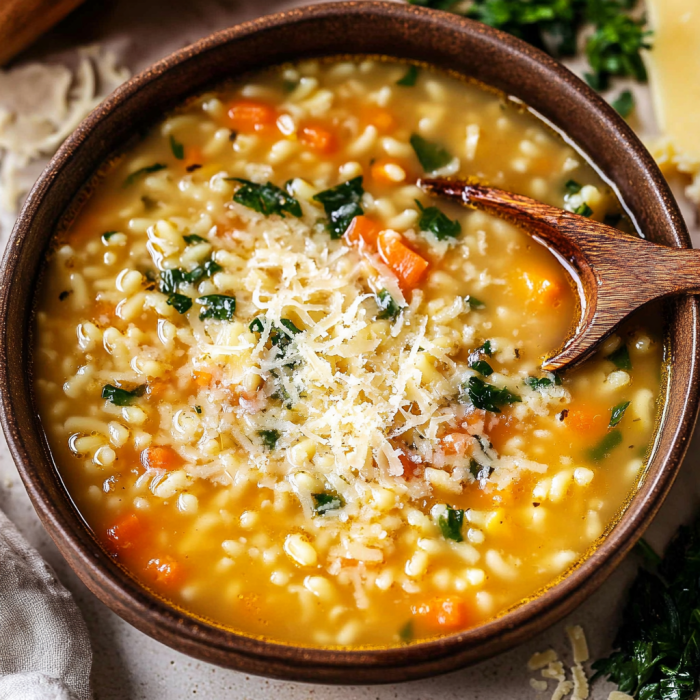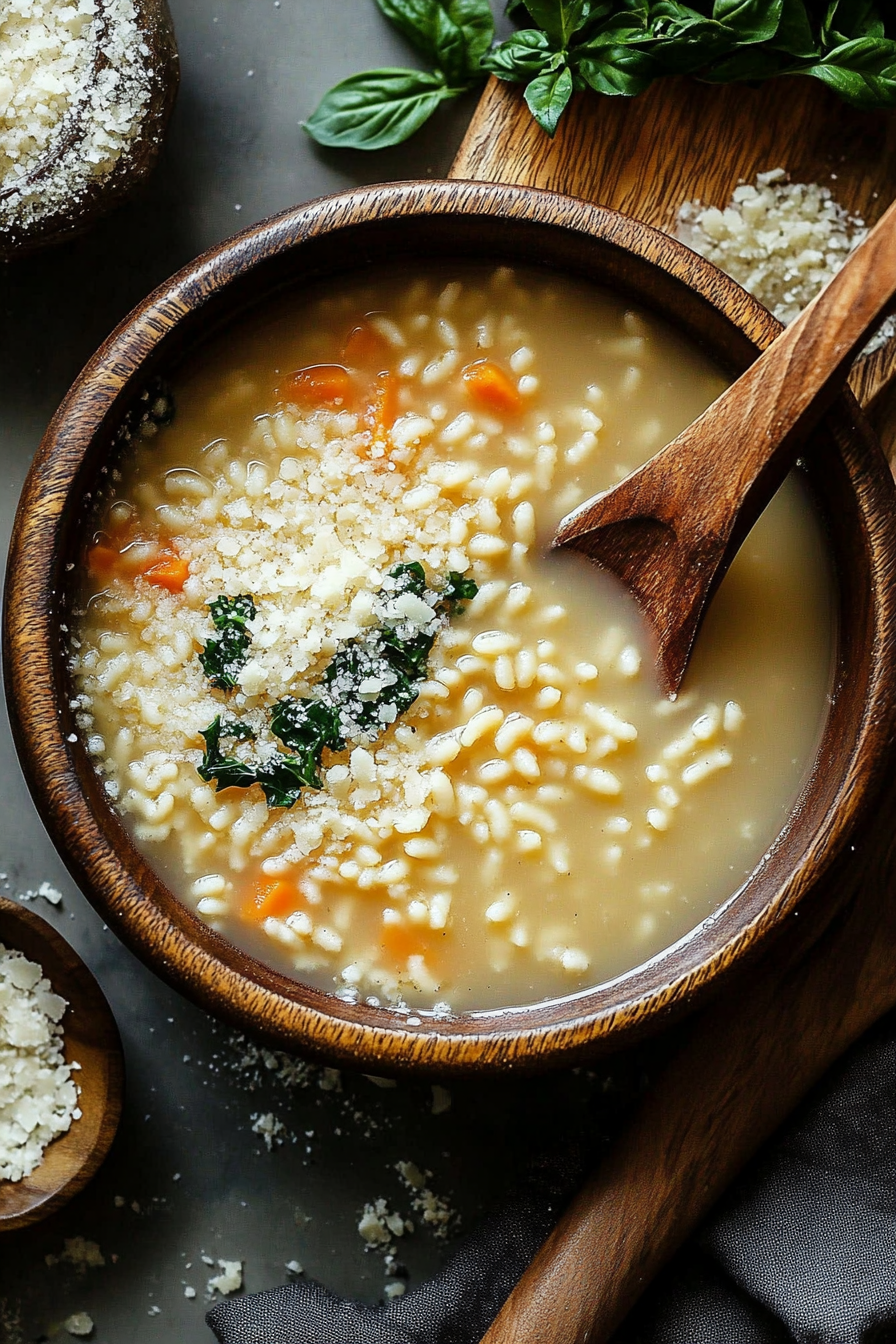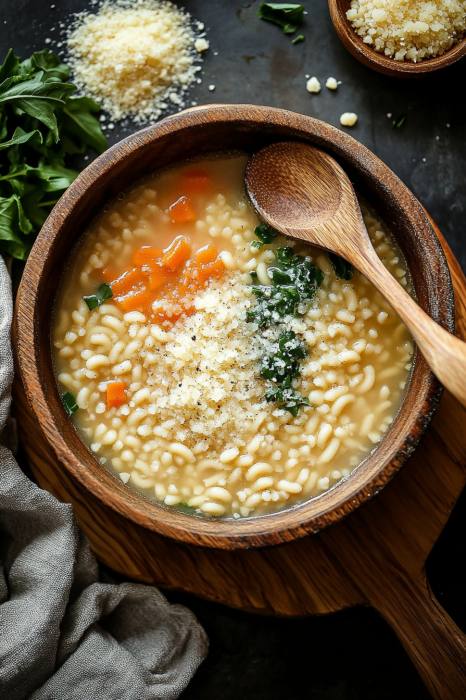 Pin it
Pin it
In Italy, pastina soup is often called 'Italian penicillin' - it's the kind of recipe that grandmothers make when you're feeling under the weather or need a bowl of comfort. The way these tiny pasta stars dance in golden broth, surrounded by vegetables that have been lovingly transformed into a silky base, creates something that's both simple and magical. Every spoonful feels like a gentle reminder that good food has the power to heal and comfort.
I learned this recipe from my Italian neighbor, Maria, who would bring it over whenever someone in our family was feeling unwell. Now it's become my own go-to comfort dish, not just for sick days but any time we need a bowl of warmth.
Essential Ingredients and Selection Tips
- Pastina: Look for small shapes like stelline (little stars) or acini di pepe (tiny peppercorns)
- Vegetables: Fresh carrots, celery, and onions create the foundation
- Garlic: Fresh cloves add both flavor and immune-boosting properties
- Broth: Homemade is best, but a good quality store-bought works beautifully
- Parmesan rind: Optional but adds incredible depth to the broth
 Pin it
Pin it
Detailed Instructions
- Build your base:
- Start with a gentle sauté of your vegetables until they're soft and fragrant. This creates the foundation of flavor that makes this simple soup so special.
- Perfect the broth:
- Let it simmer until the vegetables are completely tender - they'll blend more smoothly and create a silkier texture.
- Master the blending:
- Work in batches if needed, and blend until completely smooth. This creates that velvety base that makes this soup so comforting.
- Time the pastina:
- Add it only when you're ready to serve, stirring gently to prevent it from clumping or sticking to the bottom.
- Finish with care:
- A drizzle of good olive oil and fresh parsley brings everything together perfectly.
 Pin it
Pin it
Creating Soup Magic
I've learned that the real secret of this soup lies in how you treat each vegetable. Taking time to soften them properly before blending creates a velvety base that hugs each tiny pasta shape perfectly. The broth becomes almost creamy, without adding any cream at all.
Maria always said that good soup should be made with patience and love. 'The vegetables will tell you when they're ready,' she'd say, and she was right - rushing this simple soup only diminishes its magic.
Make-Ahead Magic
The beauty of this soup lies in its components. Make the vegetable broth base ahead of time, then cook the pastina fresh when you're ready to serve. This ensures perfect texture every time.
Perfect Pairings
While delicious on its own, I love serving this with a slice of crusty Italian bread for soaking up every last drop. On cold days, a light drizzle of extra virgin olive oil adds richness and comfort.
Chef's Helpful Tips
- Reserve some broth to thin the soup if needed
- Stir constantly when adding pastina to prevent clumping
- Use a wooden spoon to prevent breaking the delicate pasta
After countless bowls of this soup, I've come to see it as more than just a remedy for sick days - it's a reminder that the simplest foods often bring the most comfort. Whether you're under the weather or just need a bowl of warmth, this pastina soup wraps you in the kind of comfort that only Italian grandmothers seem to know how to create. The combination of silky broth and tender little pasta shapes makes every spoonful feel like a gentle hug from the inside out.
Frequently Asked Questions
- → What is pastina pasta?
- Pastina means 'tiny pasta' in Italian. They're very small shapes like stars or tiny balls, perfect for soups.
- → Can I use different pasta shapes?
- Yes! Any small pasta works - try orzo, alphabet pasta, or small shells. Just adjust cooking time according to package instructions.
- → Why blend the vegetables?
- Blending makes the soup creamy without adding cream and sneaks in extra vegetables. Kids especially love the smooth texture.
- → Can I make this ahead?
- Make the broth with blended vegetables ahead, but add the pasta just before serving so it doesn't get too soft.
- → How long does this keep?
- The soup keeps for 3-4 days in the fridge. The pasta may absorb more liquid, so add extra broth when reheating.
